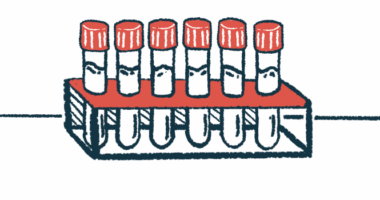Treatment with Tregs safe, may slow ALS progression: Trial
Developer calls results from small study 'encouraging and transformative'

Treatment with regulatory T-cells, or Tregs — a type of anti-inflammatory immune cell — was well tolerated and seemed to slow disease progression in a small clinical trial that enrolled six people with amyotrophic lateral sclerosis (ALS).
The work was conducted by scientists at Columbia University in New York, in collaboration with Cellenkos, a clinical-stage biotechnology company that’s developing a modified Treg therapy called CK0803 as a treatment for ALS.
According to the developer, the findings of this small trial support the advancement of CK0803, now in clinical testing in more than 60 ALS patients in a U.S. study.
“These results are both encouraging and transformative for those battling ALS,” Simrit Parmar, MD, founder of Cellenkos and senior author of the study, said in a company press release. “These findings offer a compelling proof of concept and lay the foundation for our next-generation neurotropic Tregs, CK0803.”
The study, “Clinical Safety and Preliminary Efficacy of Regulatory T Cells for ALS,” was published in NEJM Evidence, a New England Journal of Medicine publication,
Investigating Tregs as a way to slow ALS disease progression
ALS is caused by the death and degeneration of motor neurons, the nerve cells that control movement. This leads to muscle weakness and a range of other symptoms that worsen over time. The causes of ALS aren’t fully understood, but evidence suggests that abnormal inflammation in the brain likely plays a role.
Tregs are immune cells that work to reduce the inflammatory activity of other cells. These cells normally play important roles in ensuring that the immune system doesn’t attack healthy parts of the body. However, their function and levels often are reduced in ALS.
Scientists have speculated that increasing the levels of Tregs or boosting their function may help to dampen ALS-driving inflammation and slow disease progression.
Putting that theory to the test, the researchers conducted a small study in which six people with ALS were given infusions of Tregs derived from human umbilical cord blood. Each patient received four weekly infusions into the bloodstream over the course of a month, then monthly infusions for the next six months, for a total of 11 doses. Each infusion delivered 100 million Tregs.
The treatment period lasted about seven months, but patients continued to be followed after that. Among those with sufficient data, the median follow-up was 18 months.
According to the company, the “rate [of disease worsening] slowed significantly … suggesting sustained benefit.”
Unlike conventional cell therapies that require complex, individualized cell harvesting and hospitalization, our Treg therapy is … ready-to-use and outpatient-based. … It eliminates the need for [immune marker] matching and preconditioning.
Importantly, this type of treatment does not require that the Tregs be matched to the patient’s immune markers, as is needed for other cell therapies and organ transplants. The Treg therapy also doesn’t require preconditioning, in which medicines like chemotherapy are given before the infusion to destroy the patient’s existing immune cells and make room for the therapeutic cells.
“Unlike conventional cell therapies that require complex, individualized cell harvesting and hospitalization, our Treg therapy is cryopreserved, ready-to-use, and outpatient-based,” Parmar said. “It eliminates the need for [immune marker] matching and preconditioning.”
Disease worsening found to occur much more slowly with treatment
The main goal of this study was to evaluate the safety of this type of Treg therapy. Overall, the results were positive: There were no toxicities suggesting that this dose of Treg infusions is too dangerous to be used as therapy, according to the researchers.
“This study demonstrates the preliminary safety of ‘off-the-shelf’, [or donor-derived] Treg-cell therapy,” the team wrote.
The treatment’s efficacy was also explored by tracking scores on the ALS Functional Rating Scale Revised (ALSFRS-R), a standard tool that’s commonly used to measure ALS severity and monitor disease progression.
Before starting treatment, the participants’ ALSFRS-R scores were worsening at an average rate of 1.66 points per month. During ALSFRS-R treatment, scores continued to worsen, but much more slowly, at an average of 0.41 points per month. After treatment ended, the rate of worsening remained relatively slow, with patients losing an average of 0.6 points per month.
Along with the slowing of ALSFRS-R worsening, levels of neurofilament light chain, a marker of nerve damage, also decreased with Treg treatment, the data showed. All of the patients were still alive as of the latest follow-up, according to Cellenkos.
The company now is advancing its development of CK0803, which also includes umbilical cord blood-derived Tregs. Those cells have been modified to be more efficient at migrating to areas of inflammation in the nervous system, which may improve their ability to target ALS-related inflammation, per the company.
An ongoing Phase 1/1b clinical trial (NCT05695521) is testing CK0803’s safety and efficacy in about 66 adults with ALS, who may continue to receive their standard therapies. Top-line data are expected next year.








